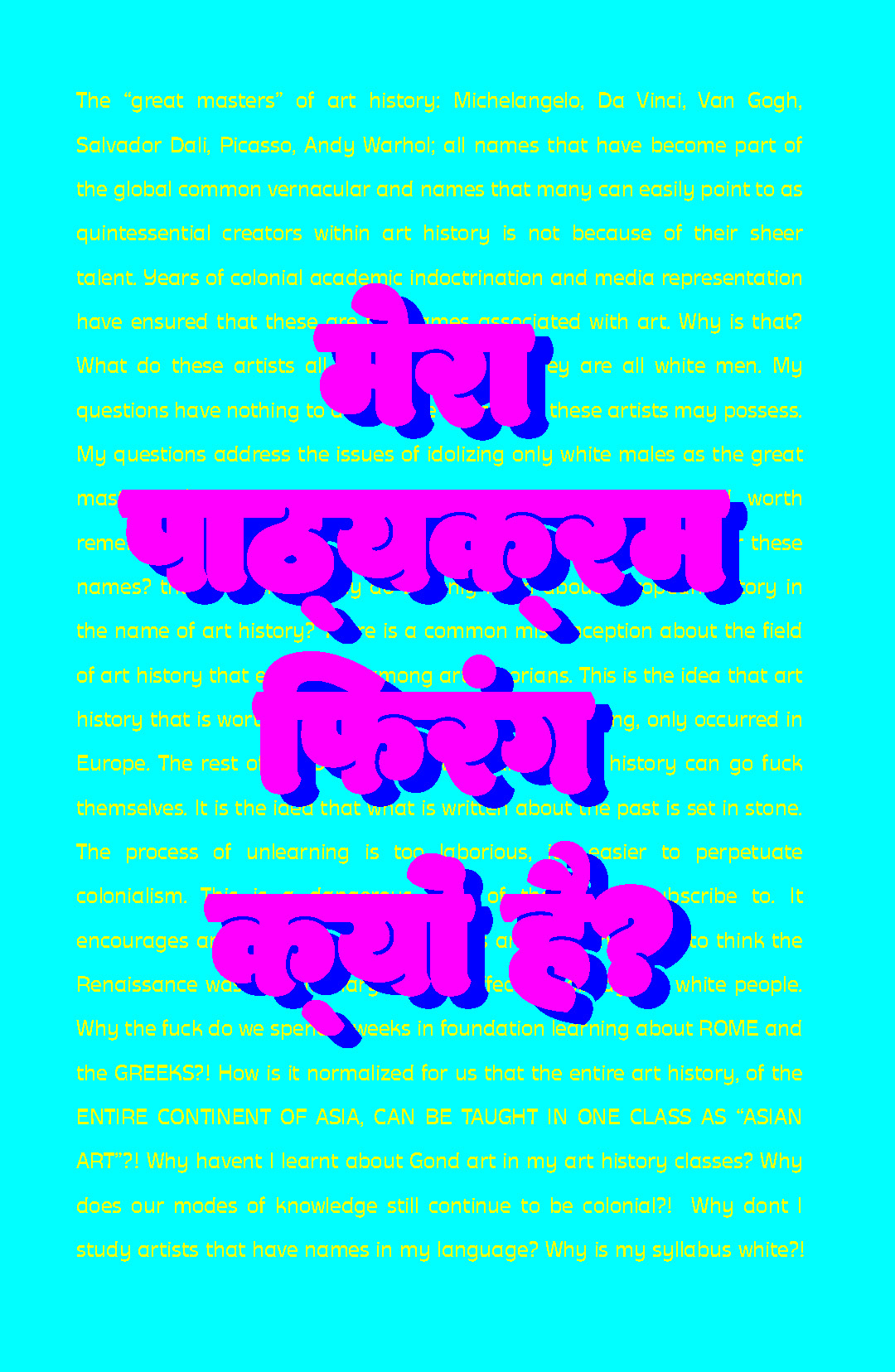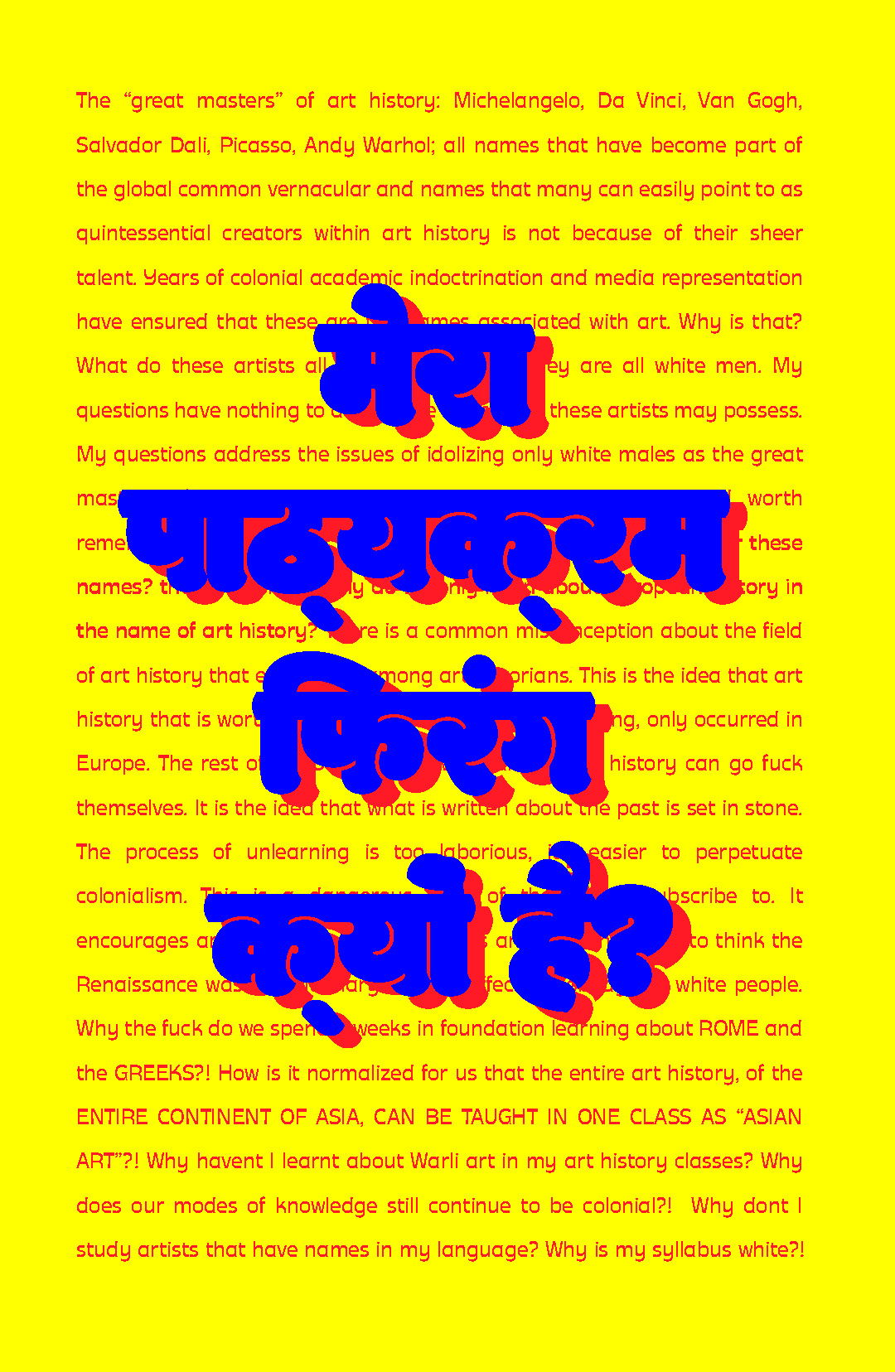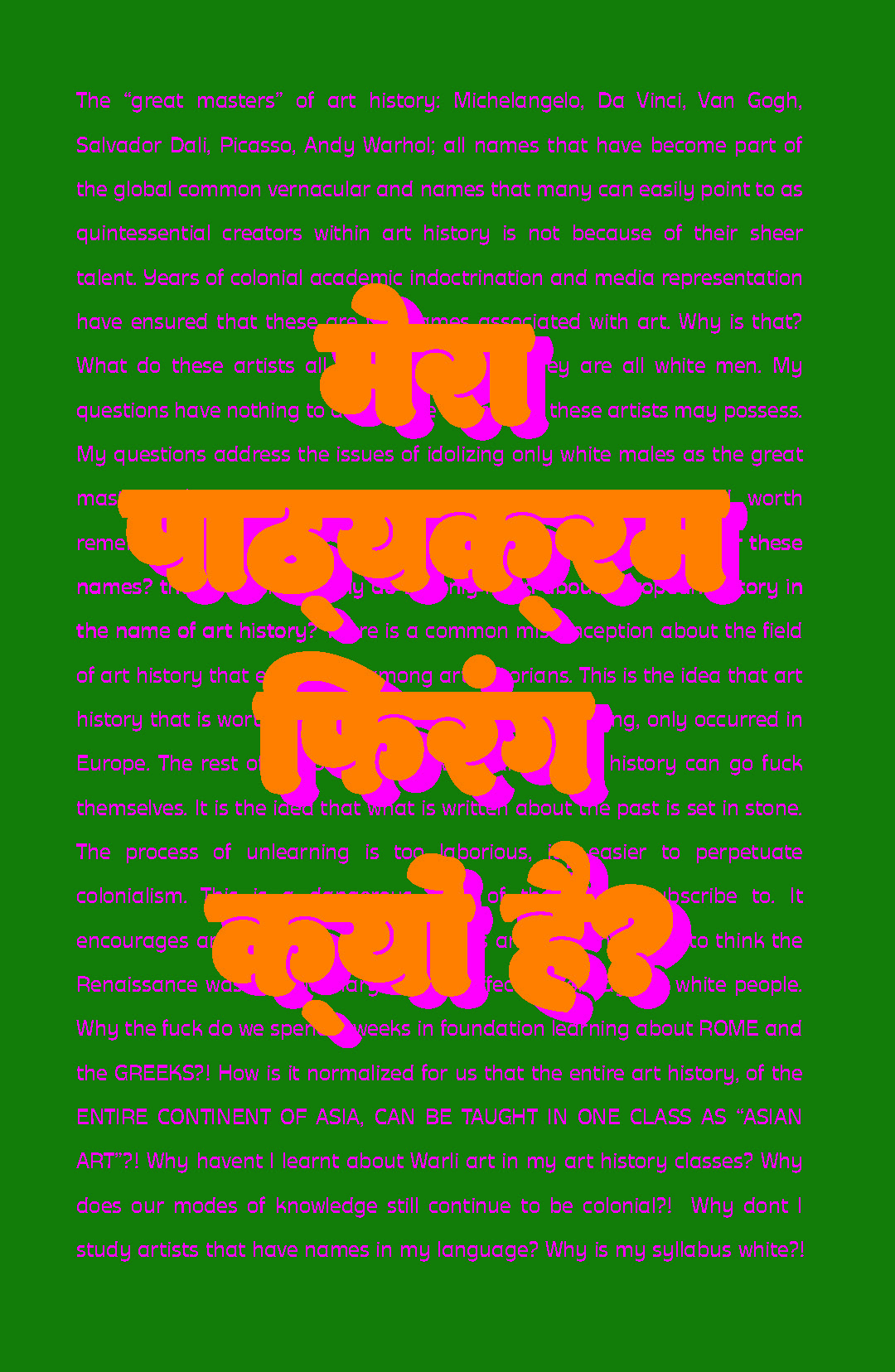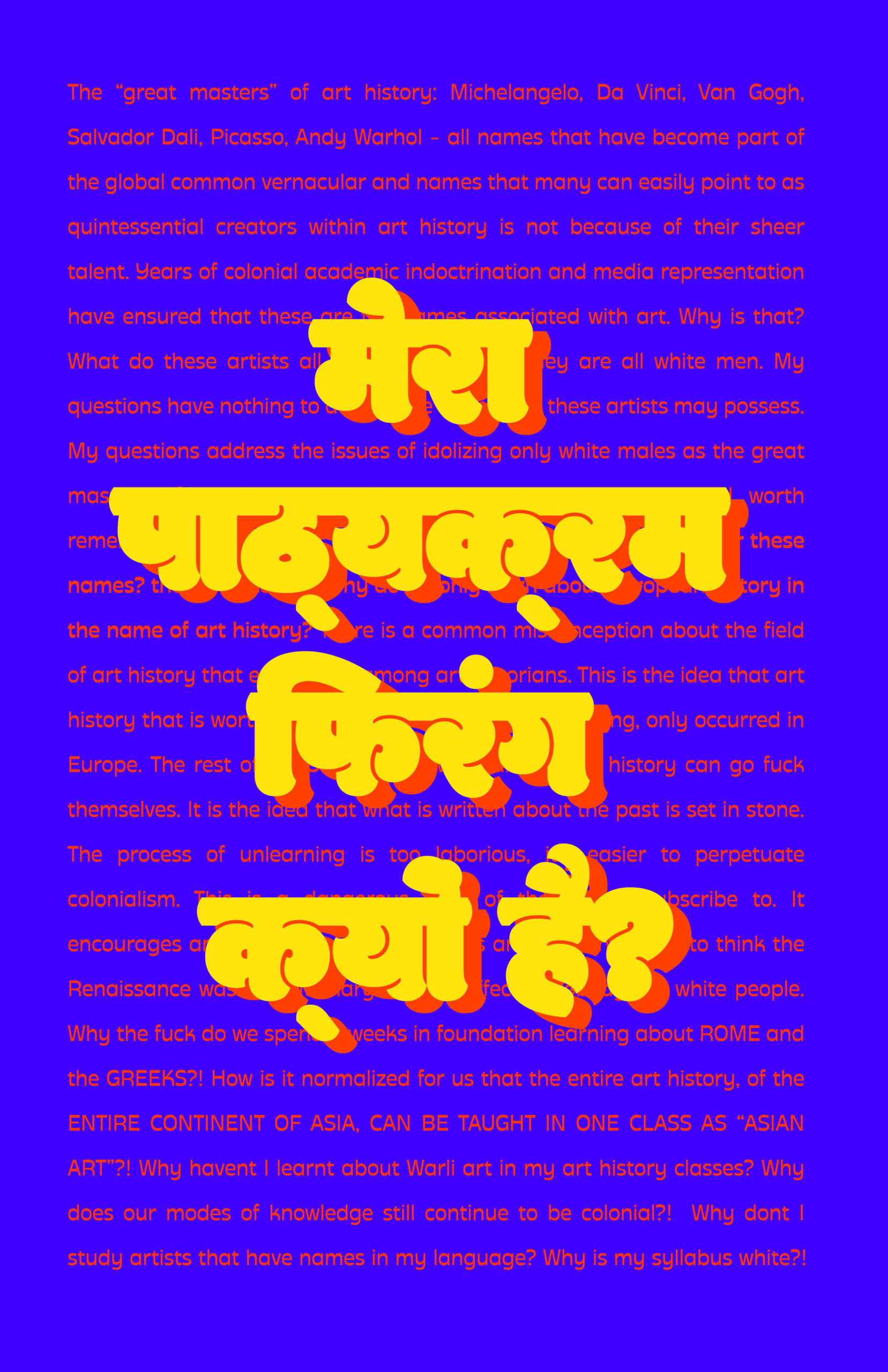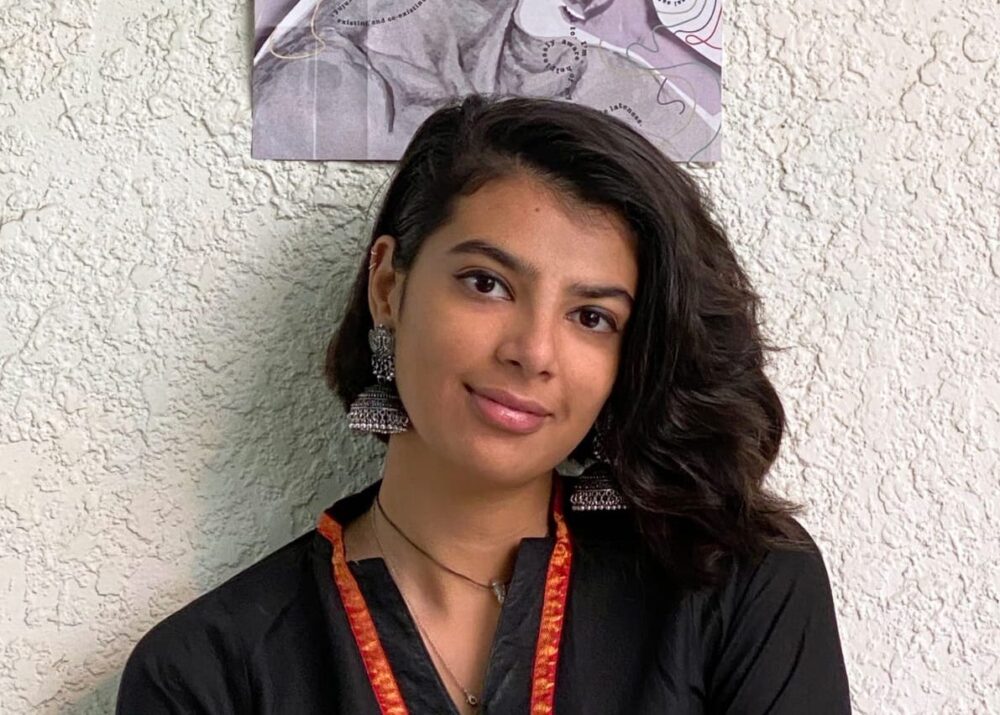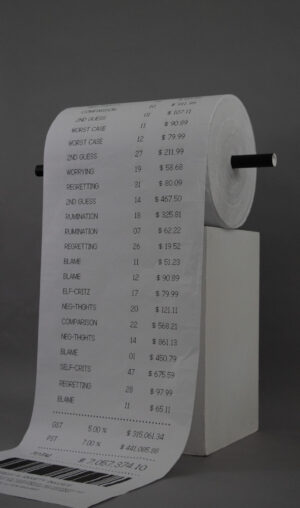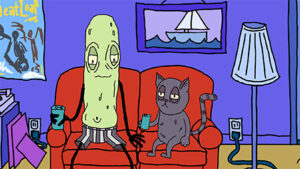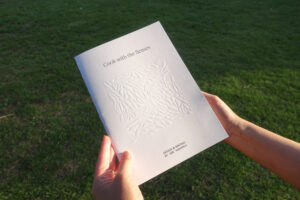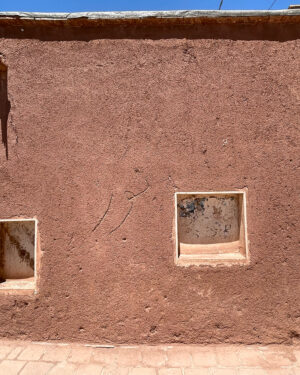कला
Kashish Hukku Jani
See it On Campus: Level 2
Visitor InfoInteract with my installation right outside the Writing Centre!
Award Recipient
- ECU Graduation Awards for Anti-Racism and Social Justice – Design
- Emily Carr Alumni Association Graduation Award for Community Engagement
Exploring decolonization through the systems of art institutions and an Indian Folk art lens.
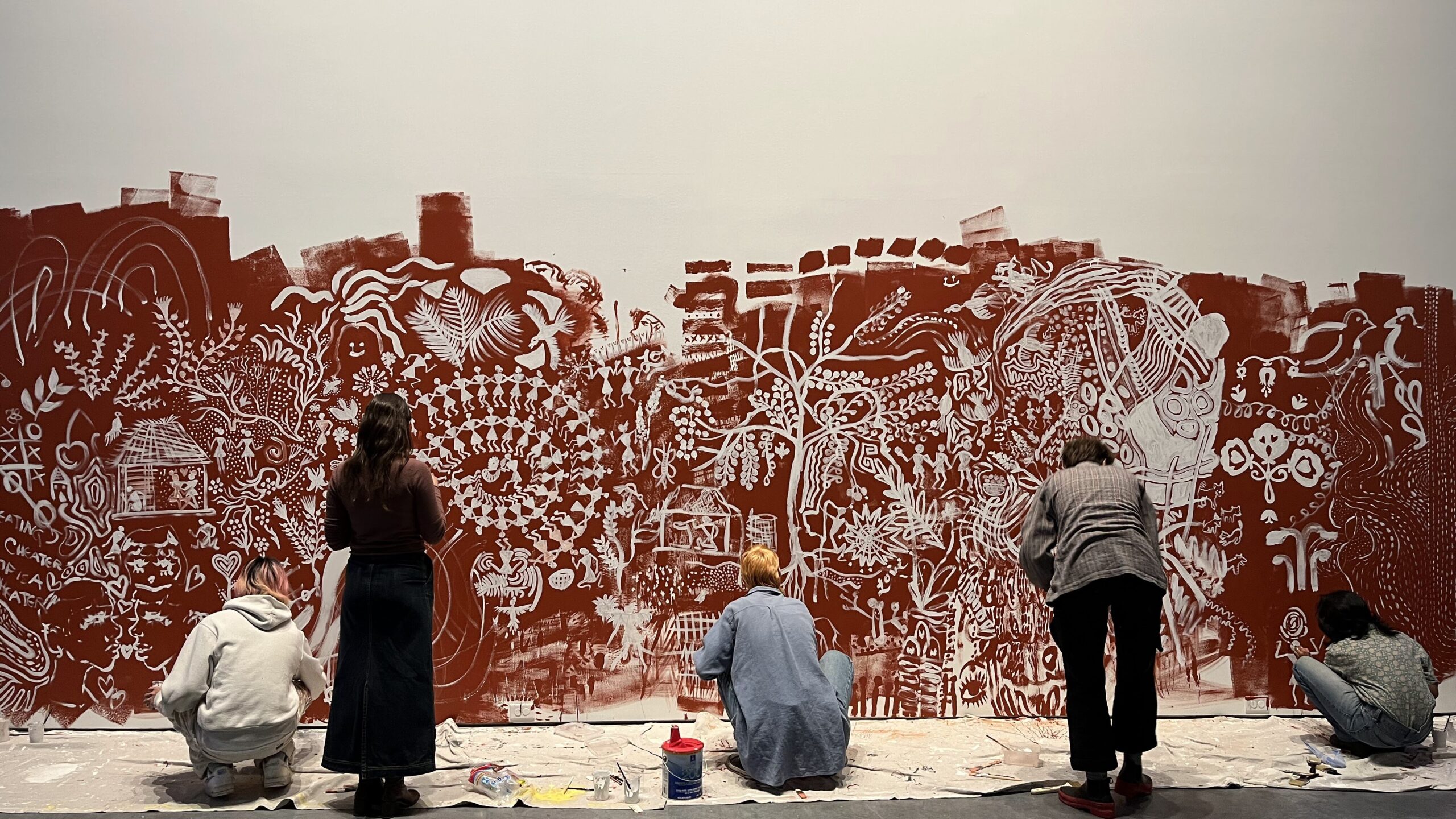
Image by T.Kehler
कला highlights non-Western art practices and replaces a colonial pedagogy as default. कला means Art in the Hindi language. The change in language demarcates the very difference between colonial art and non-colonial art. Non-western art practices revolve around community, storytelling and the passing of knowledge.
कला is not an object placed on a pedestal to gawk upon. It does not exist in a capitalistic context and inhibits human movement around it. It is a medium to build community. It depicts our connections within an ecosystem. The connections we make through that tool, are the art. Our stories are our art.
Keywords: decolonial, community, anti-racism, folk art, advocacy, equity, pedagogy.
Problem Space
This project stems from the numerous mandatory art/ design “history” classes I have sat through during the period of my formal education. They only ever taught me about Western art pedagogies, movements, and styles as the pillars of art education, mediums to revolutionize culture and media, and the very foundation of forming an art/ design practice. I would always ponder the question: Why is this the default/ dominant? My obvious interpretation of the word history (or at least obvious to me),
Objective
led me to believe that I would learn about different cultural designs, infused with various beliefs and aesthetics. By week 3, I became aware of the real meaning of the word “history”. I learned two things then. First, as Dionne Brand puts it, “No Language Is Neutral”. Second, the institution of history is as dark as it is white. The question that carried forward with me through the years was, Who gets to dominate the narrative of history? And to what extent?
Using Indian Folk art as a case study, my project seeks to highlight non-Western art history and practices, replacing a colonial pedagogy as the default or dominant in art/ design institutions.
This project seeks to bring attention to, appreciate, and re-situate non-colonial practices in our current Eurocentric systems of art institutions. Decolonization is an experimental process, and quite often it’s messy. The labor of decolonization is heavy, something that can only be established through sharing the workload.
Colonized labels of race, gender, and culture often create barriers in the process, because we start thinking about whose place is it to bring about these changes. Through my capstone project, I visualize what decolonization can look and feel like. I speculate a reality where every one of us has a role in creating a more equitable world.
Philosophy and Research Activities
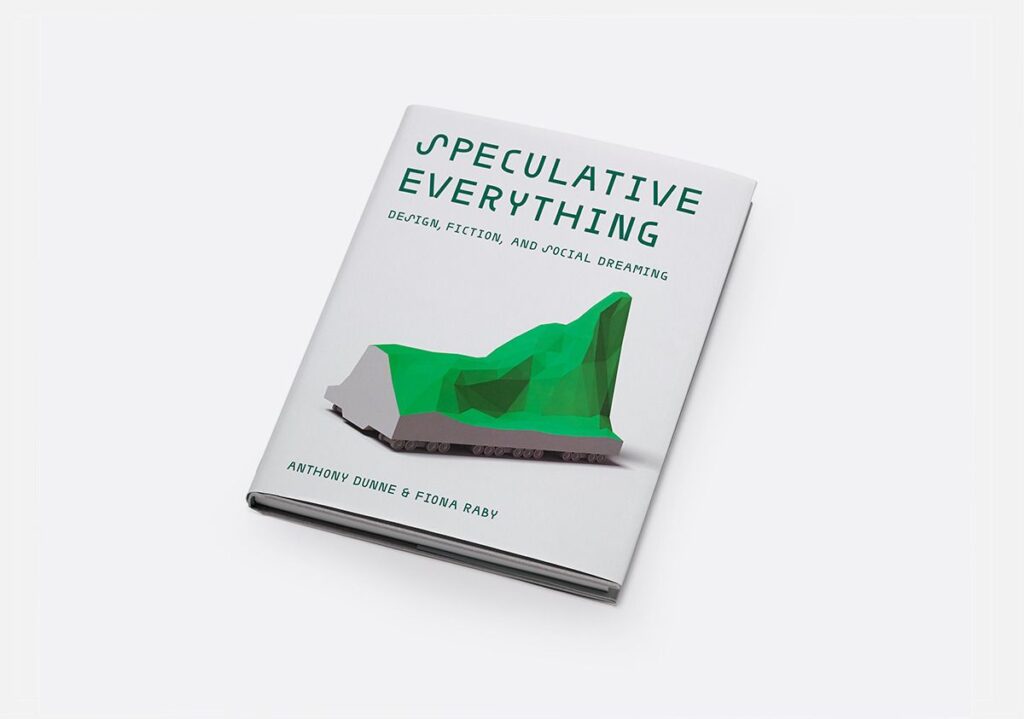
This project pursues a Speculative Design method. Speculative design is a practice concerned with future design proposals of a critical nature. This term was popularized by Anthony Dunne and Fiona Raby as a subsidiary of critical design.
Adopting this method, through various outcomes, my capstone project speculates a reality where Western art practices are not the default or dominant.
Since this past year, researching Indian Folk art and bringing its various aspects to the spotlight has been my prerogative. Some of its characteristics that drew me in were the sense of community it creates, and this notion that art is not always an object, sometimes it can be a way of living.
My design research activities in the beginning weeks included deep dives into the various intersections of the different types of Indian Folk art. Through mind mapping, brainstorming, visual dumps, and spatial research, I started collecting data and exploring the ideologies behind Non-western art.
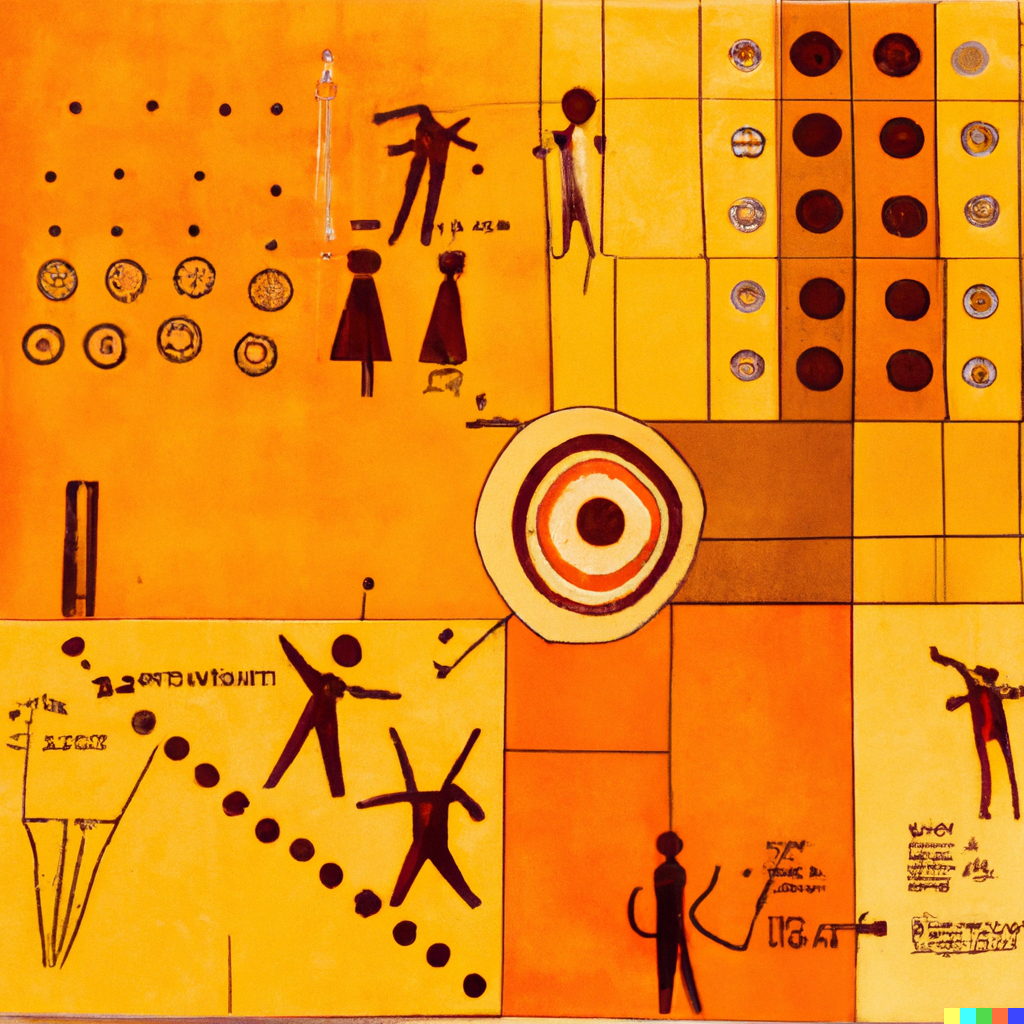
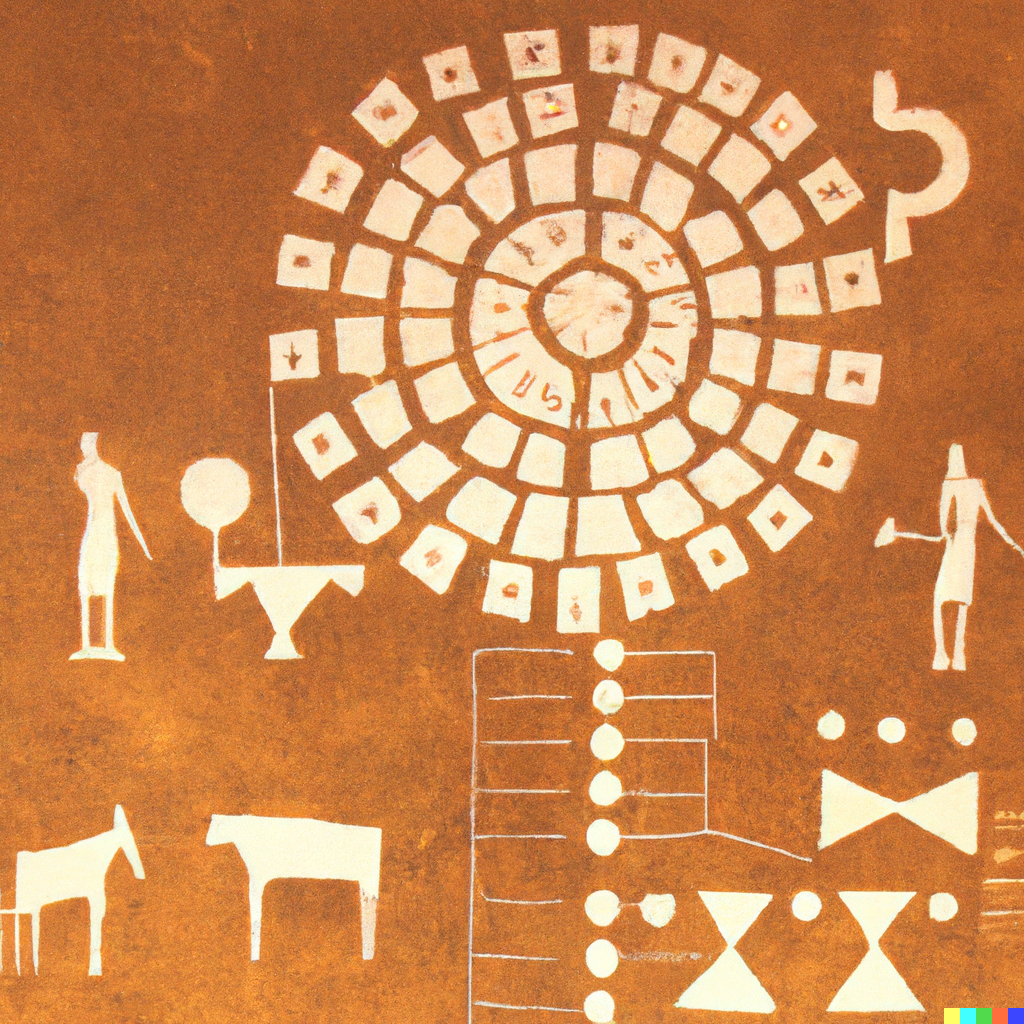
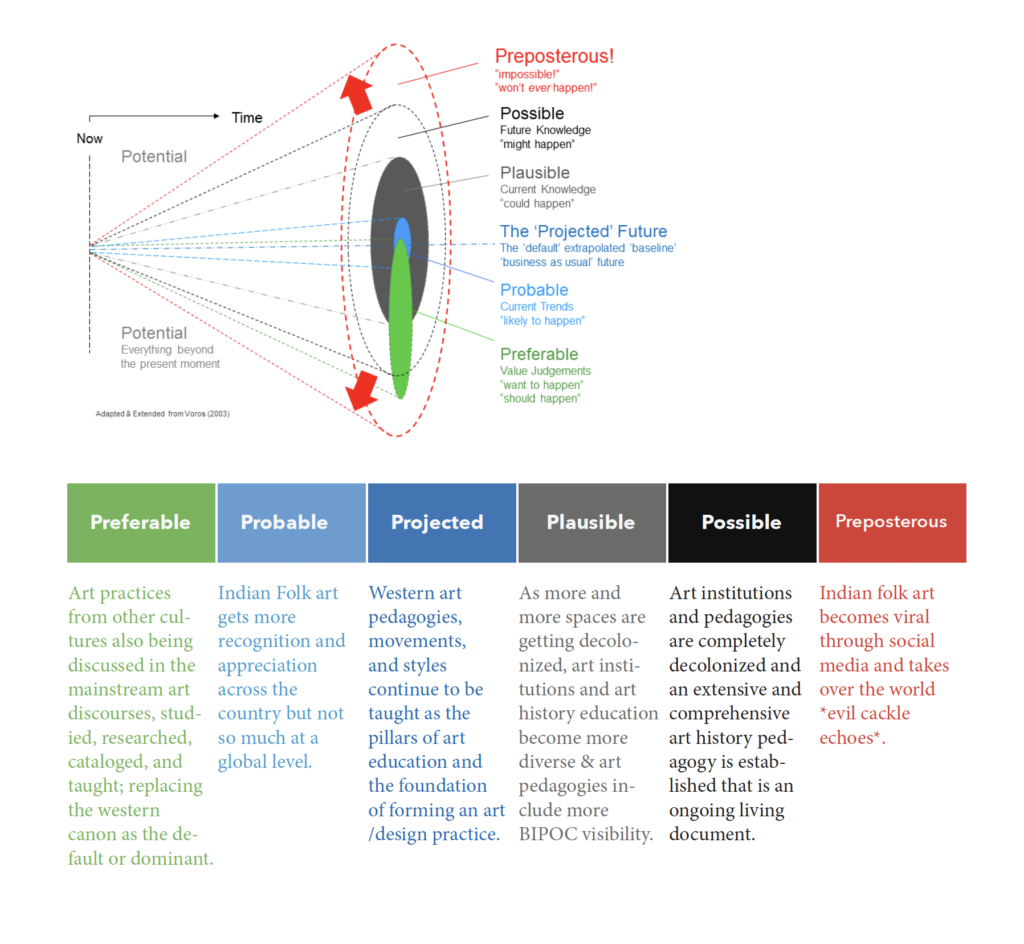
In the following weeks, I created a series of images, wherein I reimagined decolonized museums in the context of Indian Folk Art. I Photoshopped Indian Folk art into some of the famous museums around the world to reimagine the pedestal.
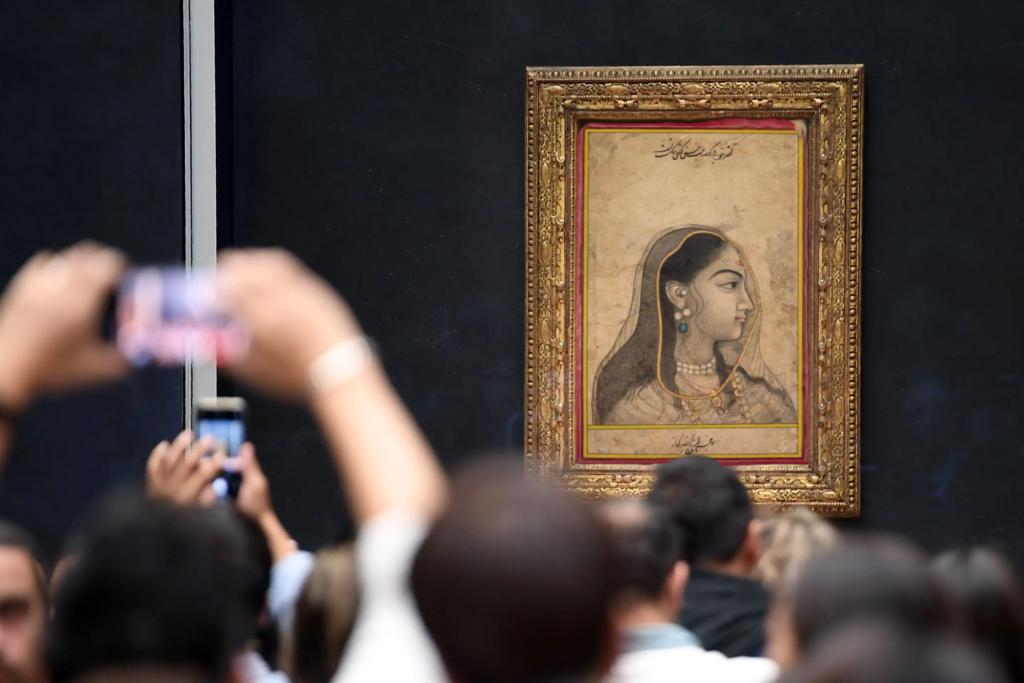
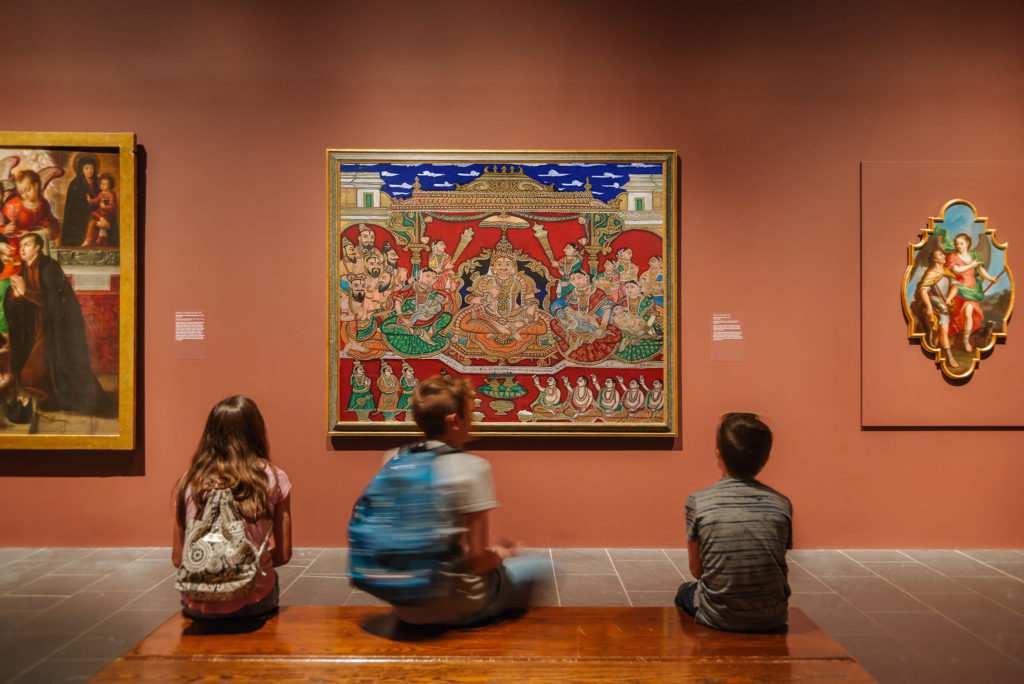
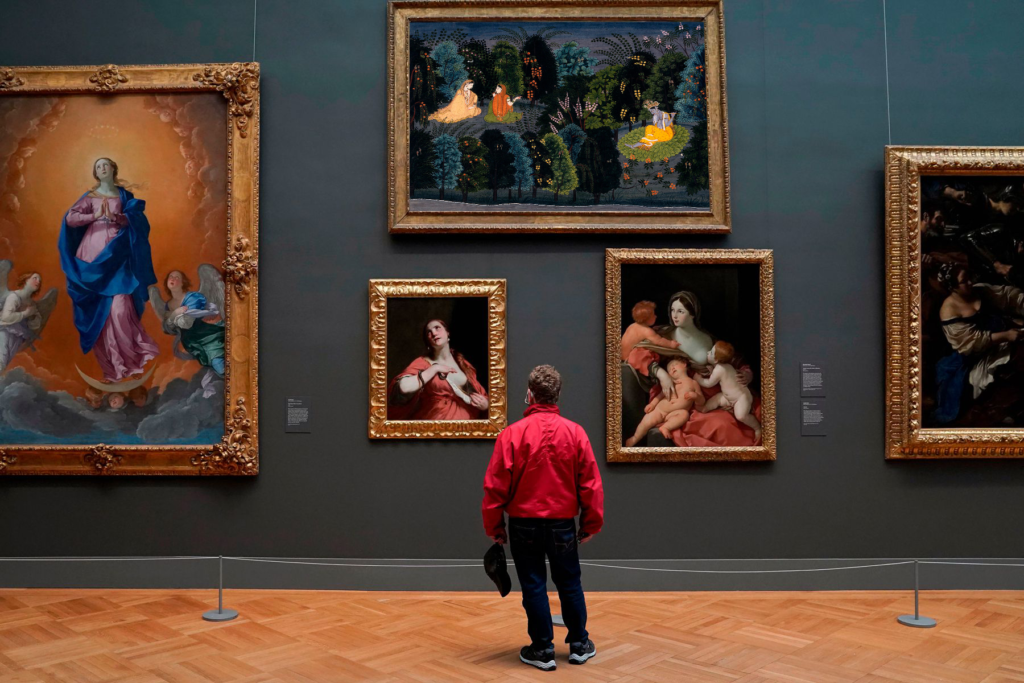
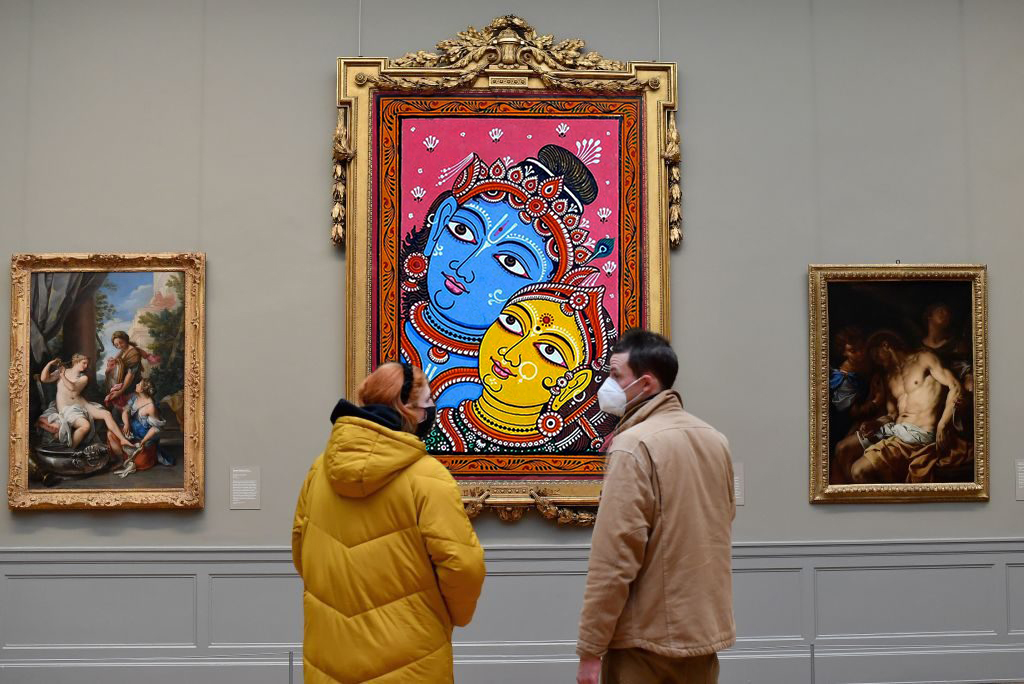
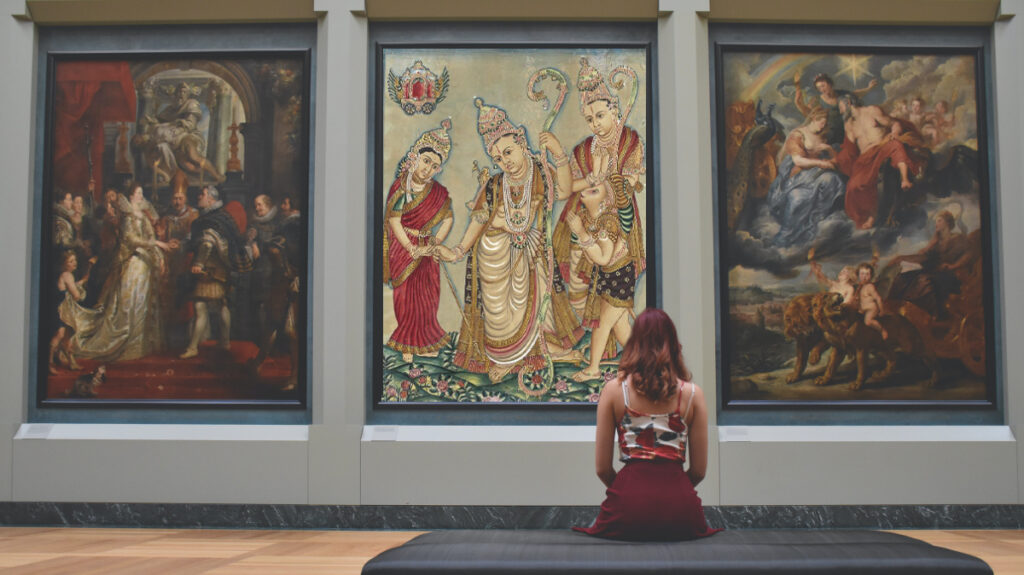
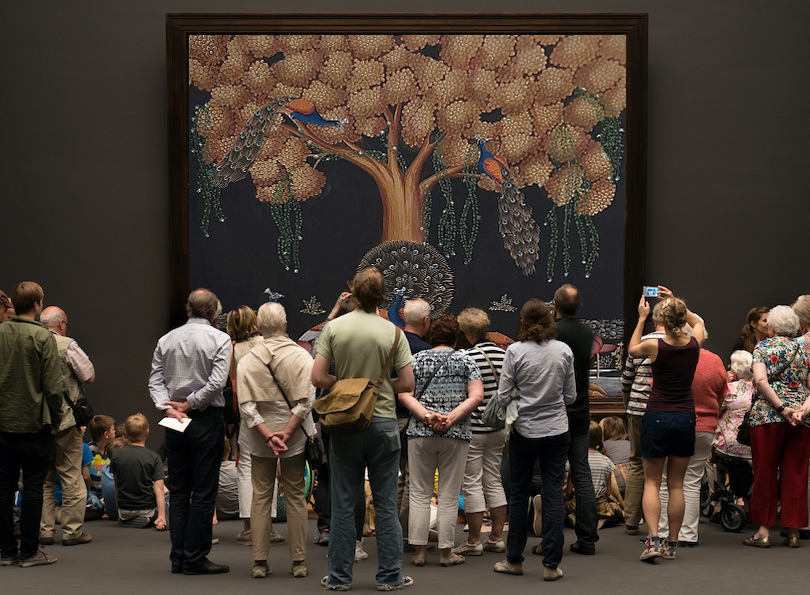

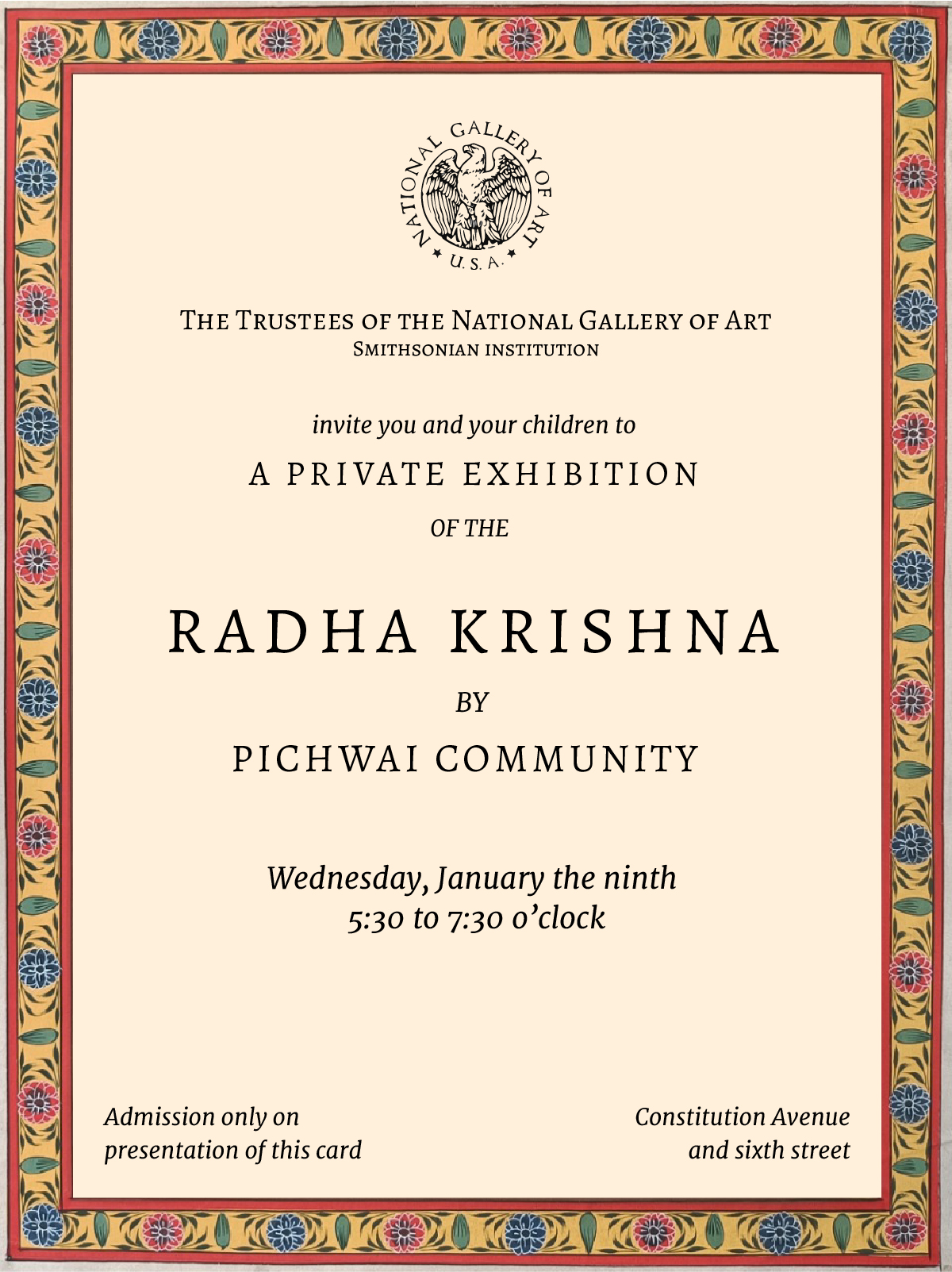
I also created a case study that critiques the colonial language used by art galleries to describe European art in contrast to non-western art and reimagines it, to create a language that situates non-western art in the mainstream.
Soon after, I was given the opportunity to hold a community-building workshop using Warli art to visualize decolonization in art galleries, through an exhibition being curated at the Libby Leshgold Gallery, in collaboration with Dr. Sue Shon, Dr. Alla Gadassik and some of my peers.
Part 1: The Exhibition
This exhibition was a public history class called ‘Art in the Flesh’ which was part of a larger ongoing faculty show ‘This Exhibition is not an Exhibition’ curated at the Libby Leshgold Gallery at Emily Carr. Through the curation of this exhibition, I wanted to create a space where movements of the body aren’t inhibited and there is no object on a pedestal to interact with. Where objects are not valued above the needs of the community, but rather act as a medium of storytelling and sharing.
Through this exhibition, I intend for us to think critically and converse about dominant art practices all around us. My capstone project turns to art philosophies that have been difficult to process in western methodologies and institutions. Non-western cultures believe in the art of storytelling, an art of living rather than objectified aesthetics. How do those values translate into a pedagogy dominated by objectification and hierarchies?
I invited everyone to explore a reality where these “other” art practices are instead placed on a pedestal, glorified and replace the western canon as the default. Through the Warli art-making exercise and by using art as a tool, there was a real sense of community in the room.
Part 2: The “Classroom”
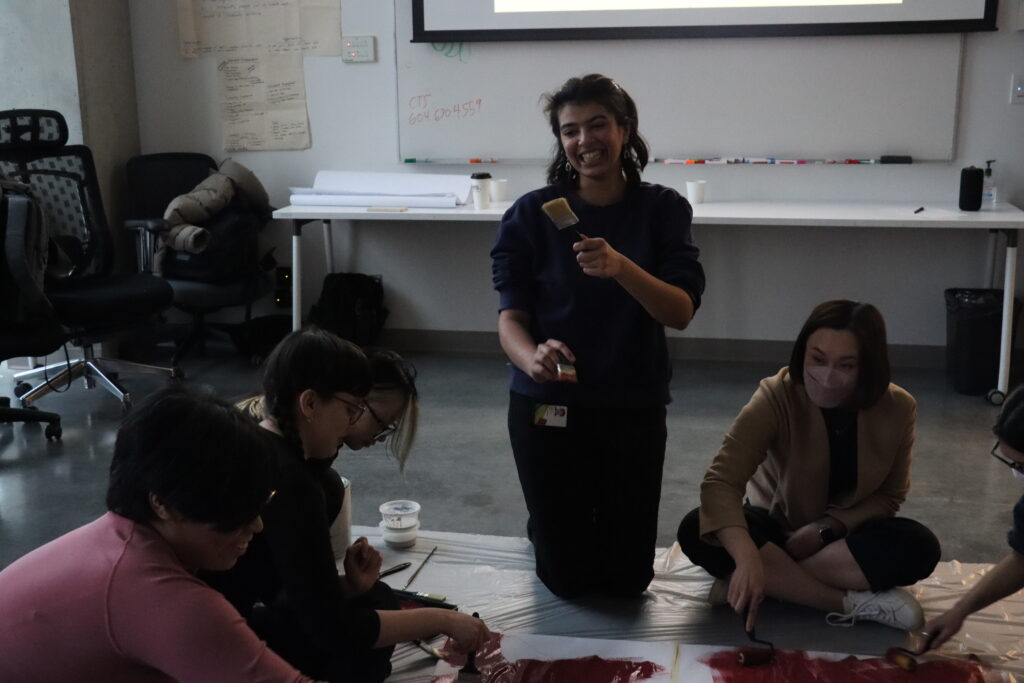
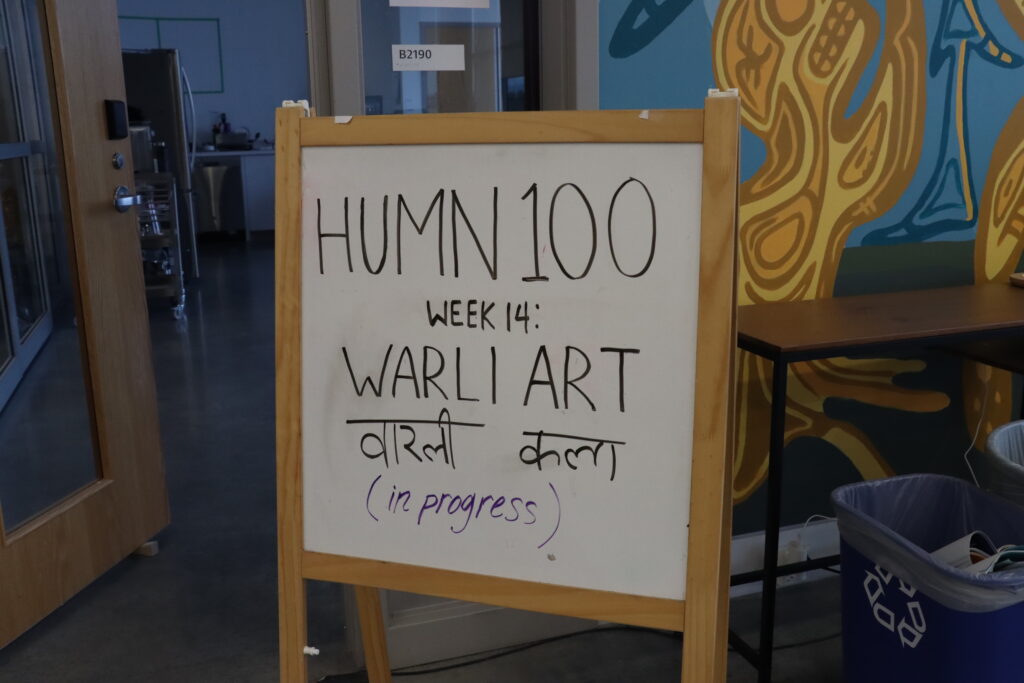
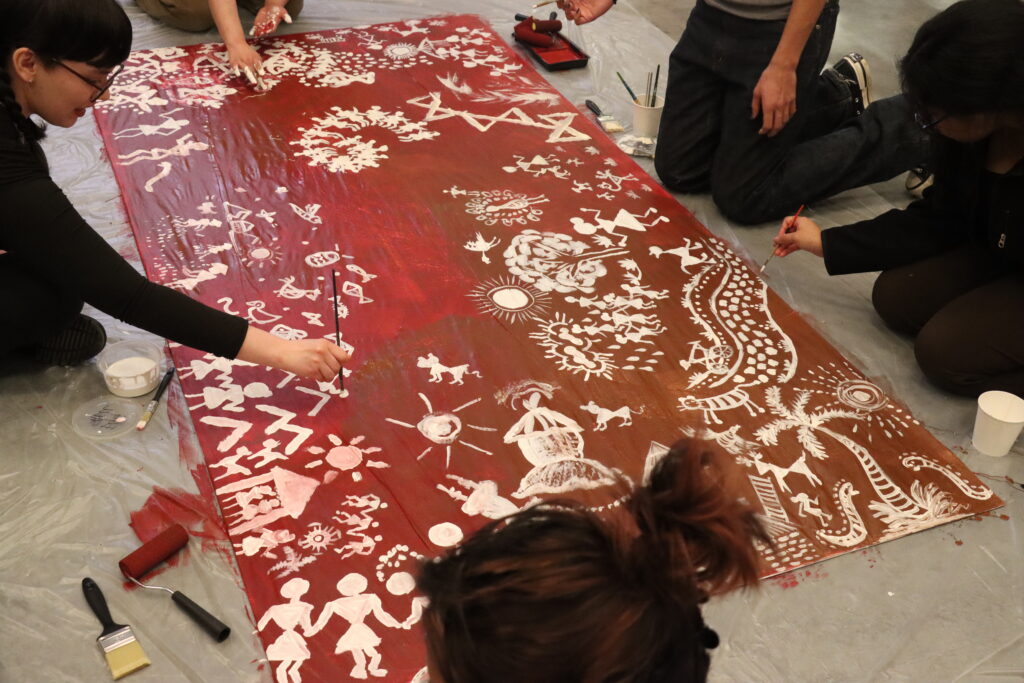
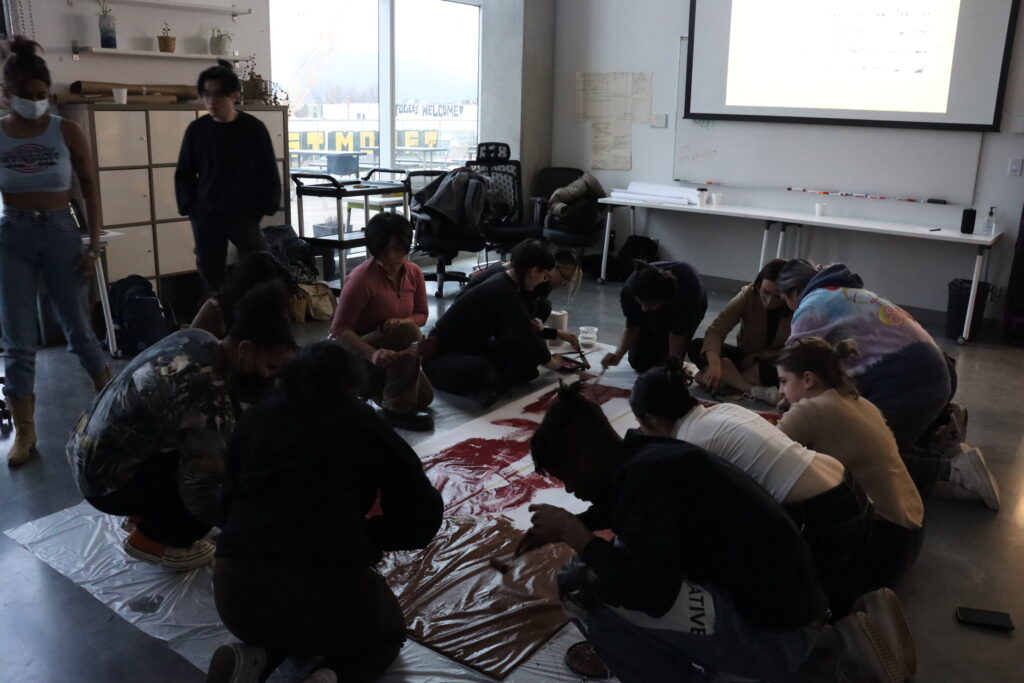

Images by T.Kehler
The next phase of my project was to decolonize the classrooms. During my research, I came across numerous articles and literature that emphasize: “Decolonization starts at an education level”. I conducted a workshop/class and framed it in the context of a Mandatory HUMN 100- Week 14 class that never took place due to colonial shortcomings. My insights from this workshop were that, given the tools and resources, people are highly curious and interested in the various art practices
and de-objectification of art. Setting up the workshop was a community effort in itself. All the students sat in a circle and conversed about how difficult it can be to situate ourselves as a Person Of Colour within institutions that still continue to uphold white supremacy. After an introduction to the various facets of Warli art and Indian Folk art, we all came together to visualize our communities on a giant canvas in front of us in Warli Art style.
Our painting became a tool to create a strong sense of community in that room.
Part 3: “Class notes”

Image by Odartey Aryee
These fold-out “class notes” serves as an avenue to fill in the gaps present in a Eurocentric curriculum. Due to the limited scope of my project, I was able to create class notes on only three types of Indian Folk art, out of the many types that exist. In concept, these class notes should already be integrated into an art history curriculum at universities and should exist from various cultures as well.
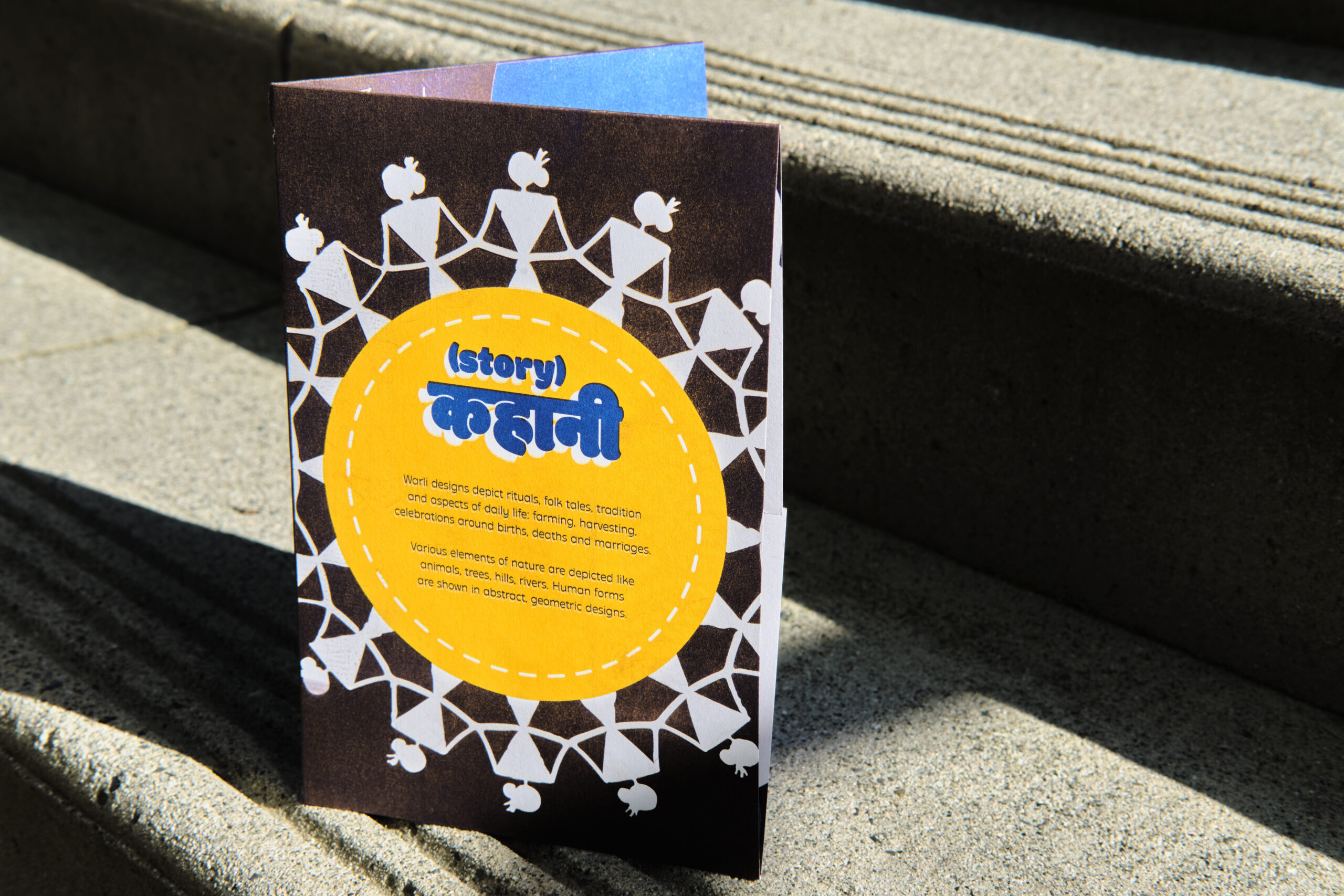

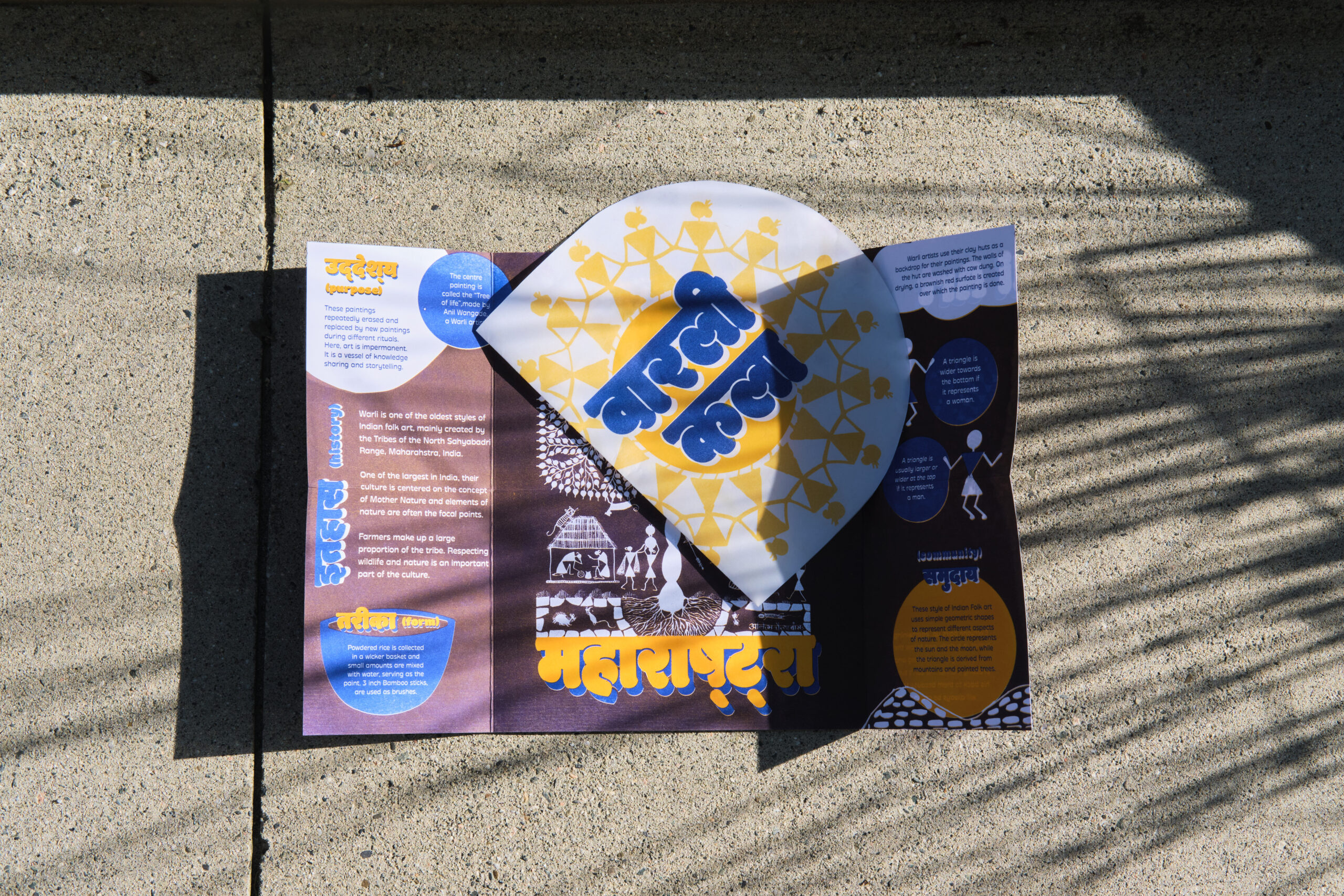
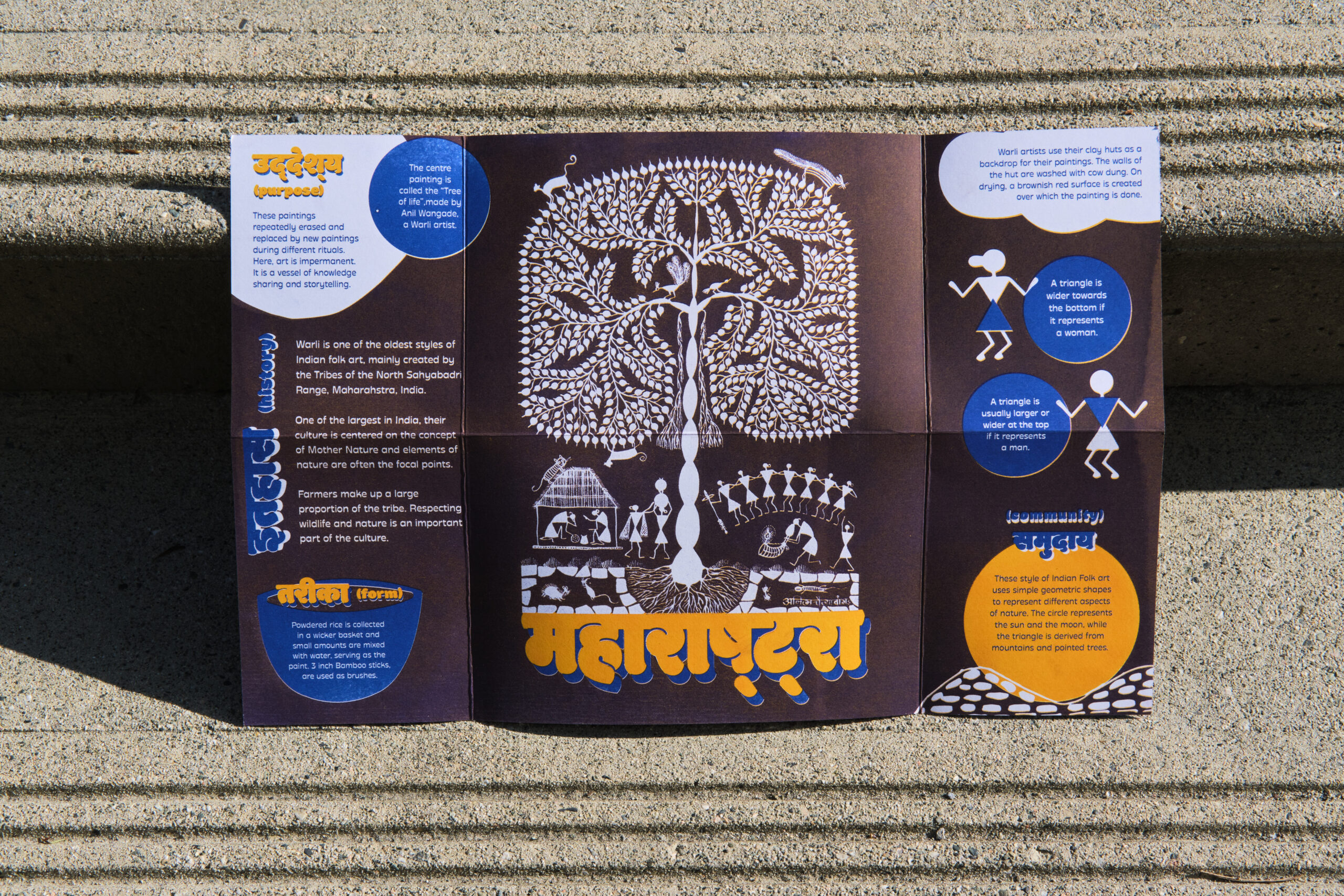
The design process started with thumbnail sketches and iterative design revisions to Risograph and Laser printed ephemera through Adobe Illustrator. The notes are accompanied by a vellum sleeve that adds visual interest. The identity of the notes is loyal to the nuances of the folk art style it depicts. Emulating actual Warli, Gond and Bhil art, each ephemera’s details speak to the art form’s details. The open-source graphics and images used in my notes belong to actual Warli artists, Gond Artists and Bhil Artists, retaining their signatures to spotlight the artist themselves and give credit to the respective tribes.
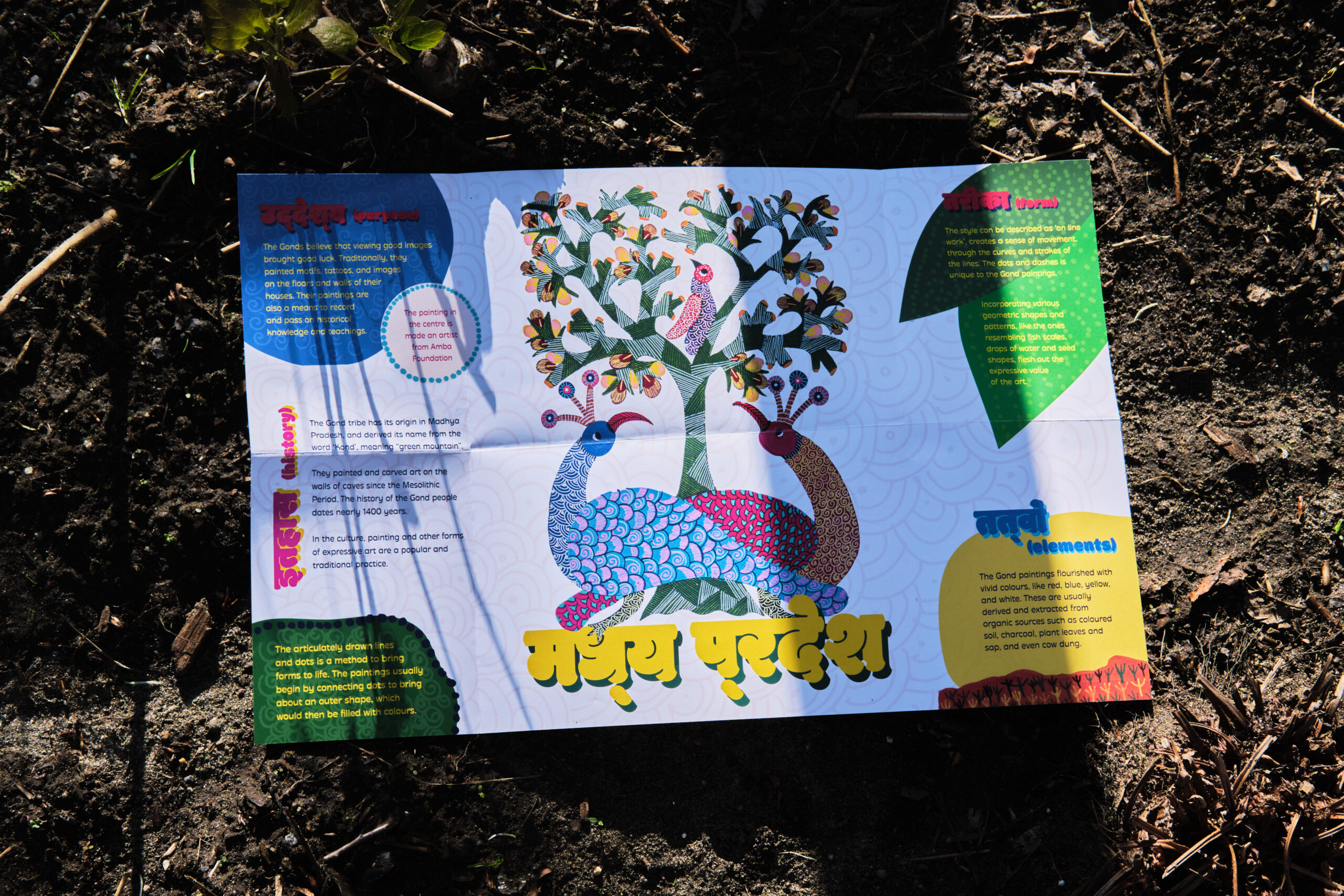
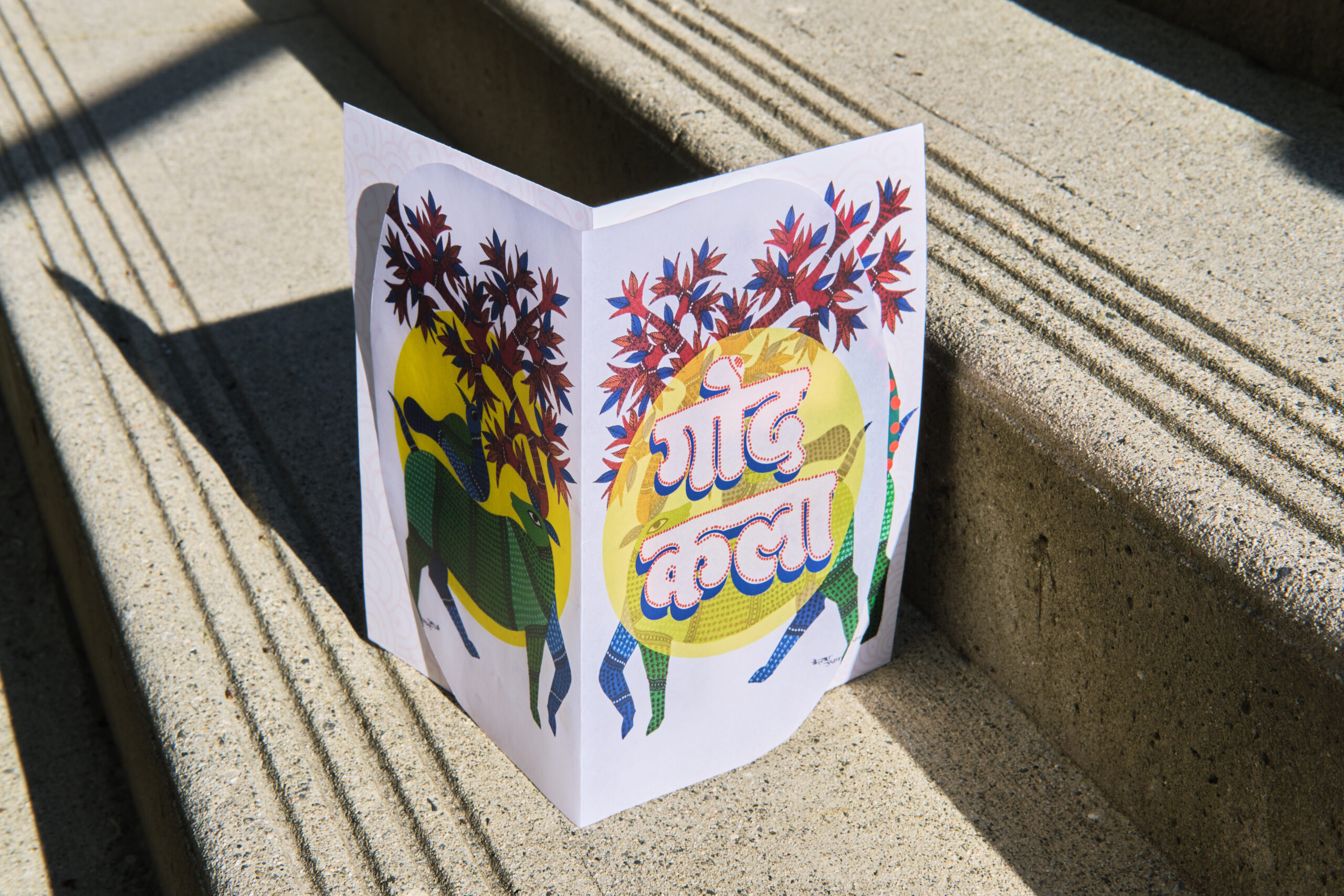
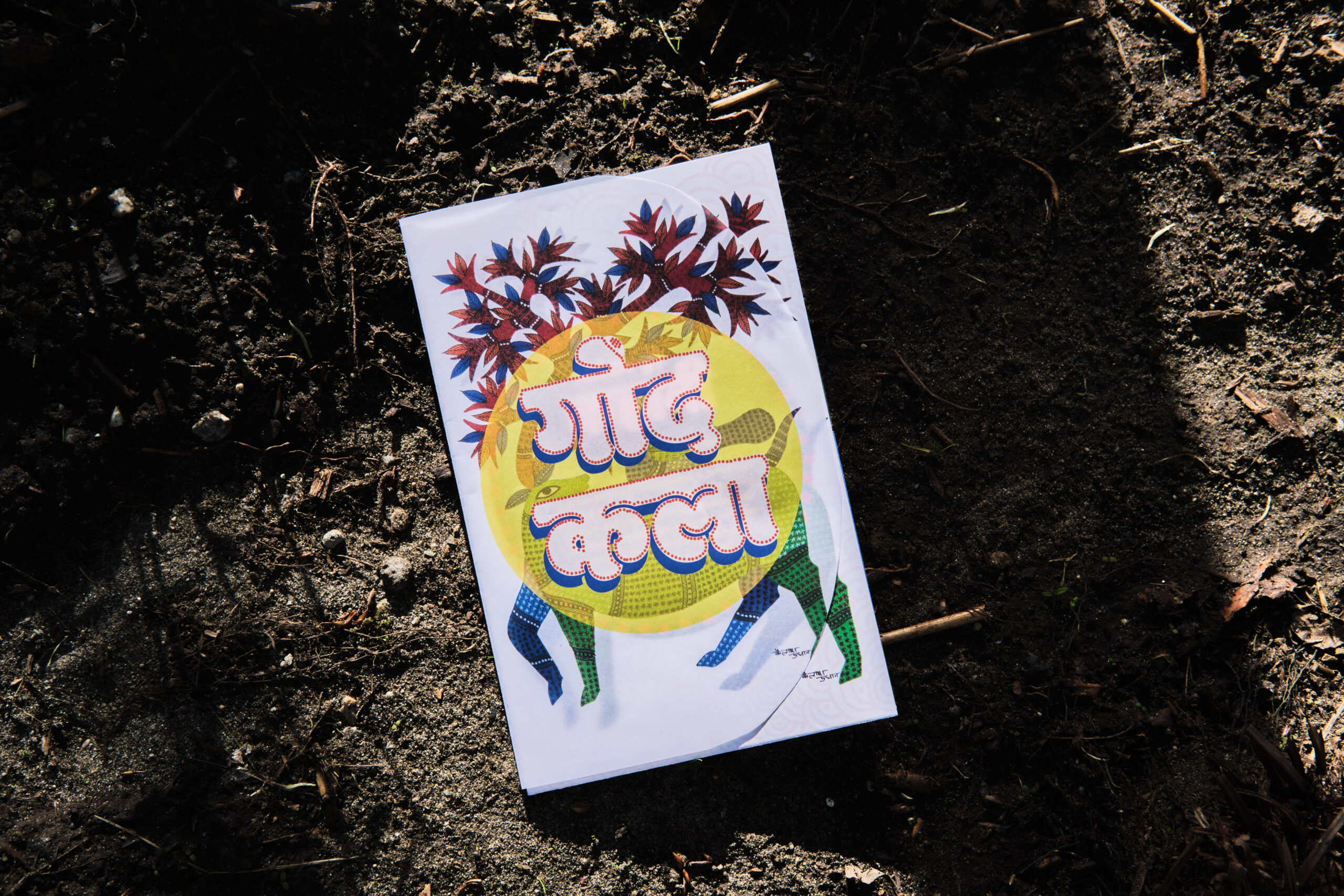
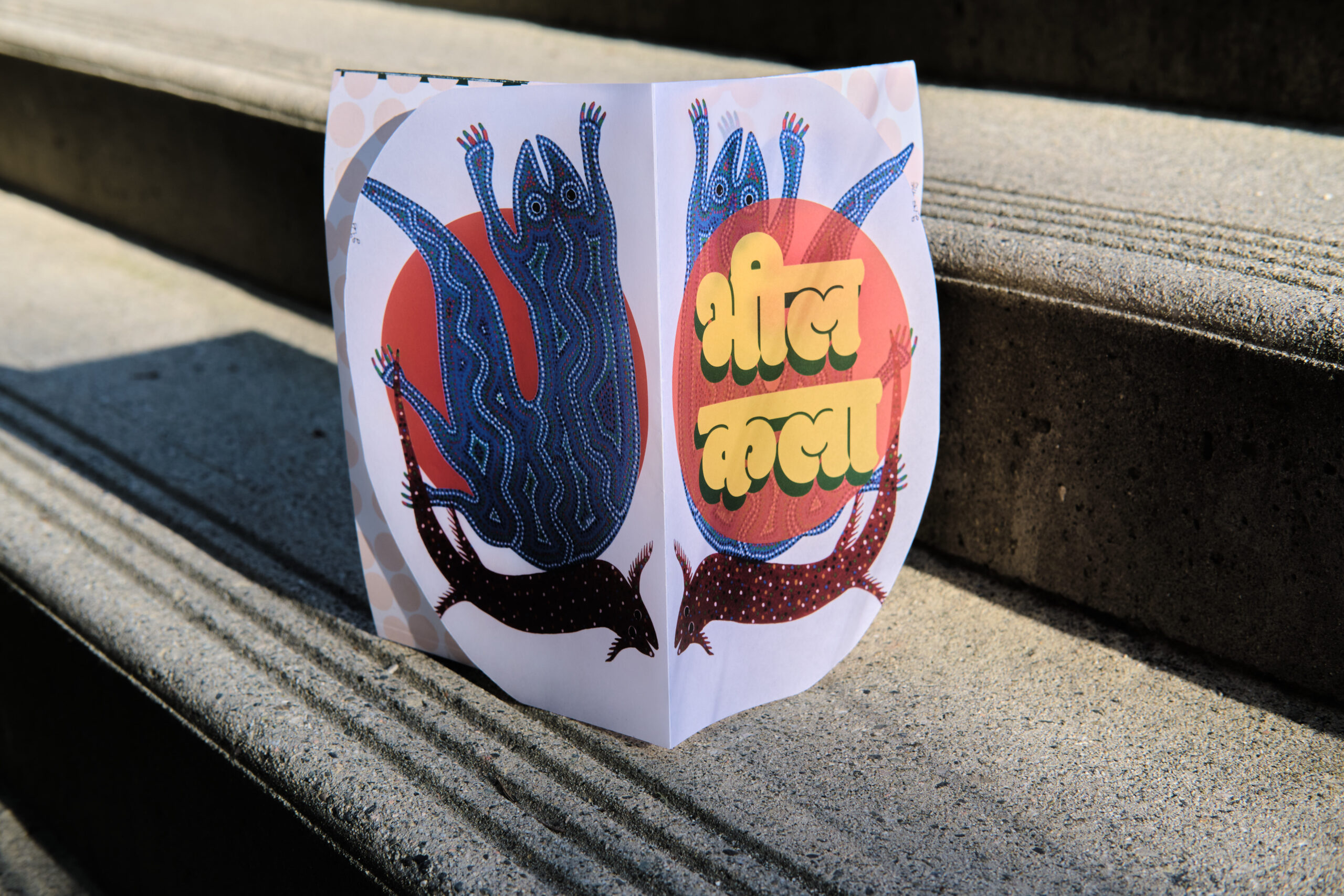
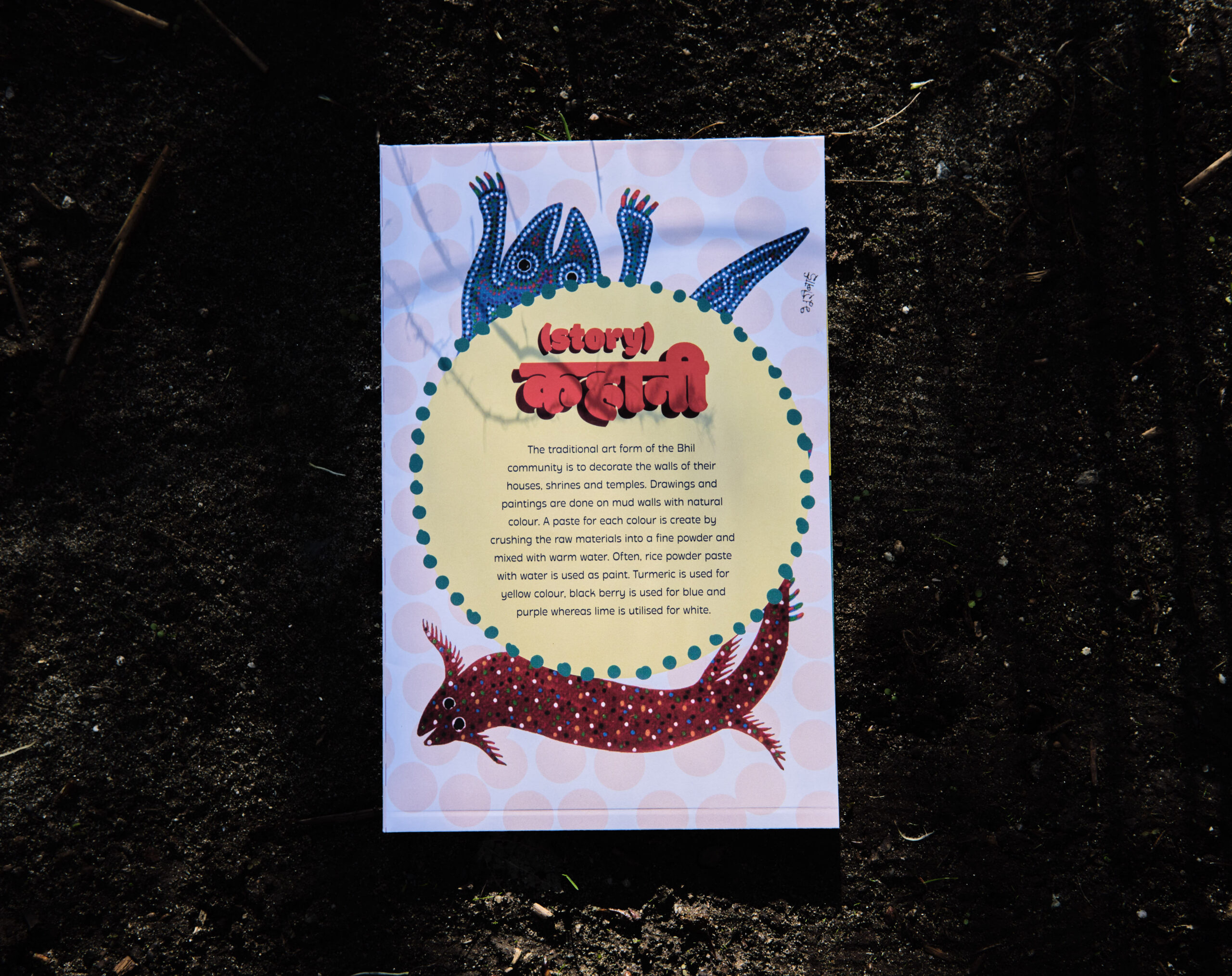
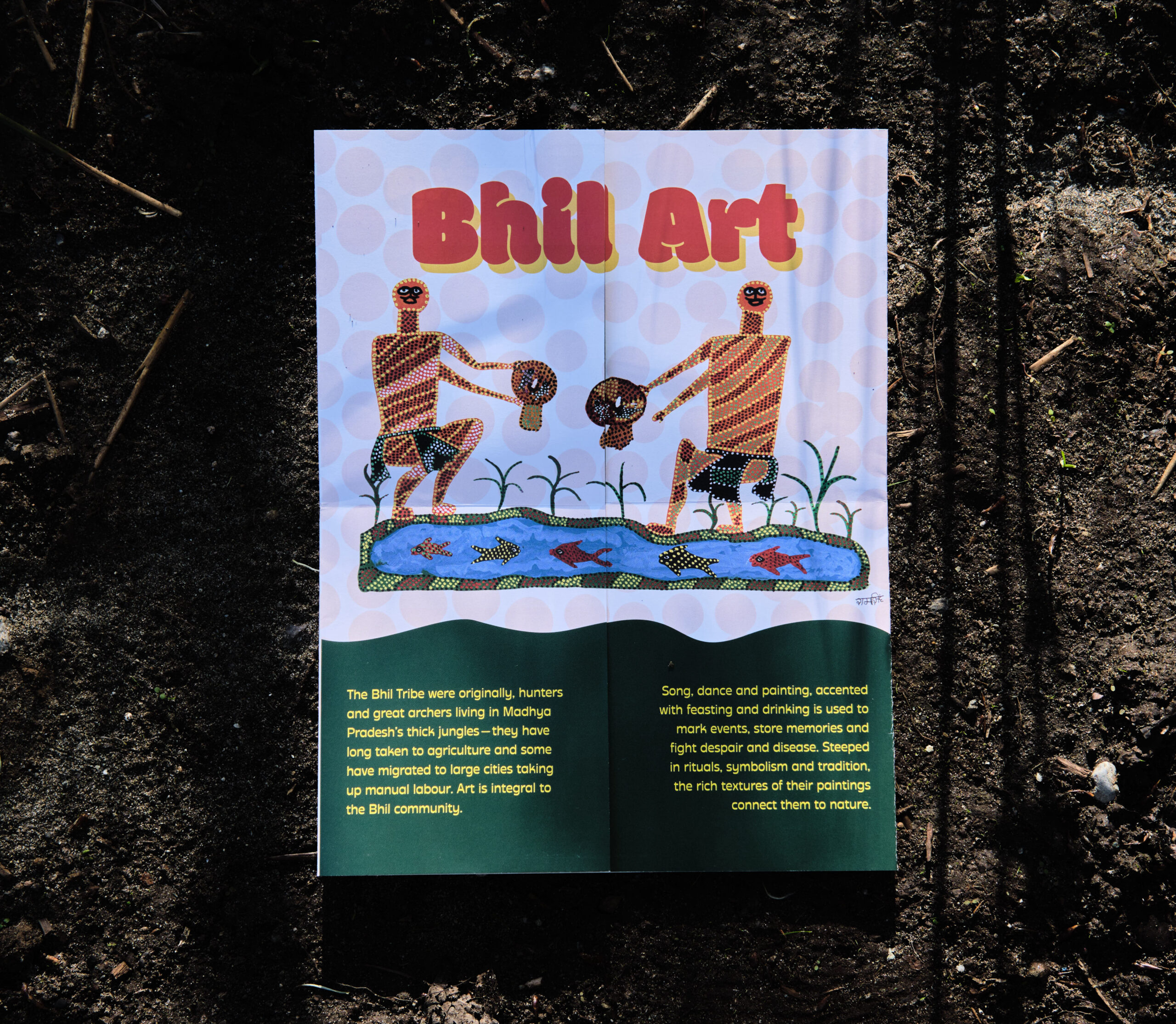
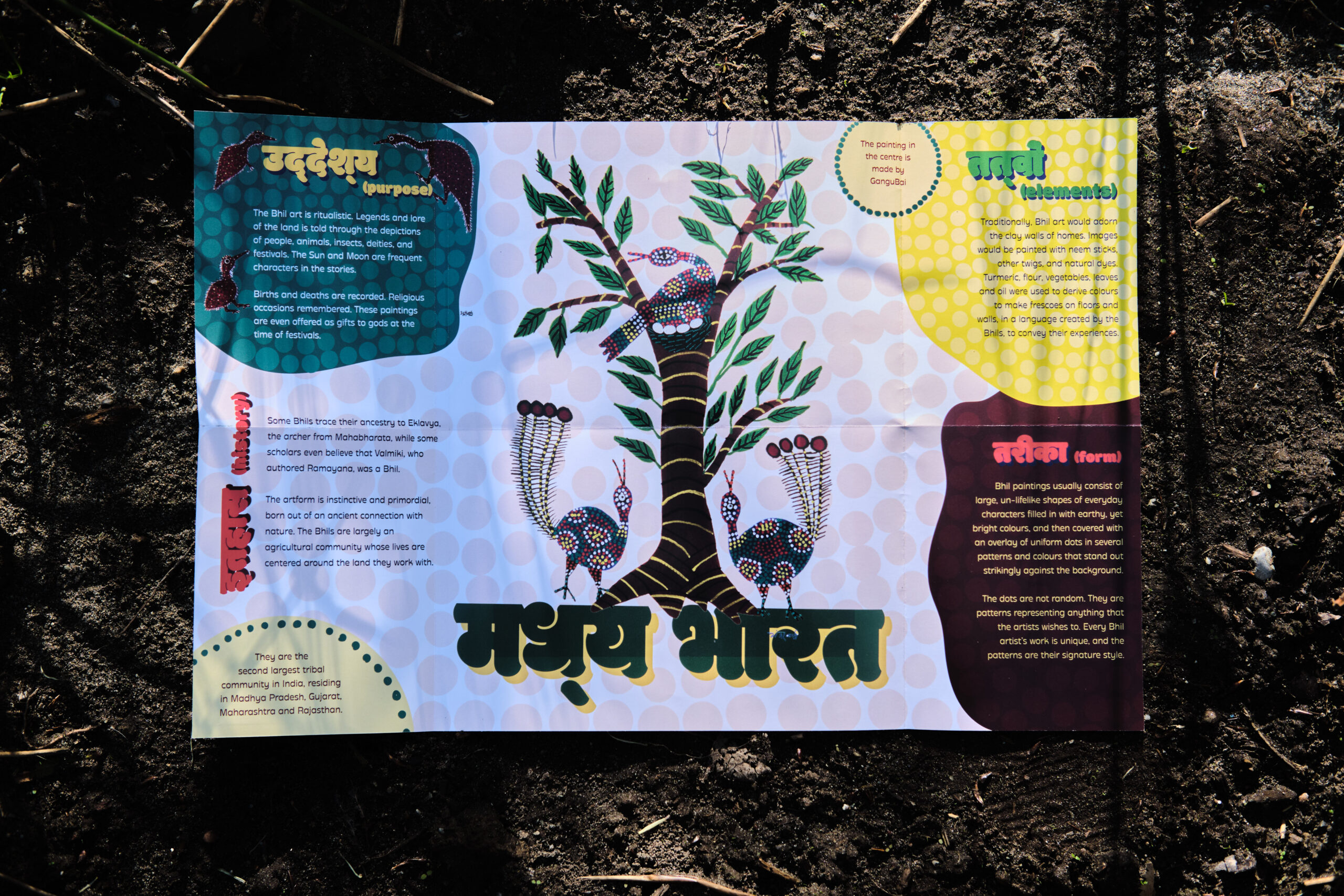
Images by Odartey Aryee
Part 4: “Why is my curriculum white?”
The last part of my project features a series of posters I created asking the question: Why is my curriculum white? This text-on-text poster series contains a blog-like rant in the background, encapsulating my frustrations as an Artist Of Colour in a colonial institution and critiquing it. The colors are inspired by Indian Kitsch art. The typefaces used throughout the printed components of my project are Modak and Stadio Deva.
